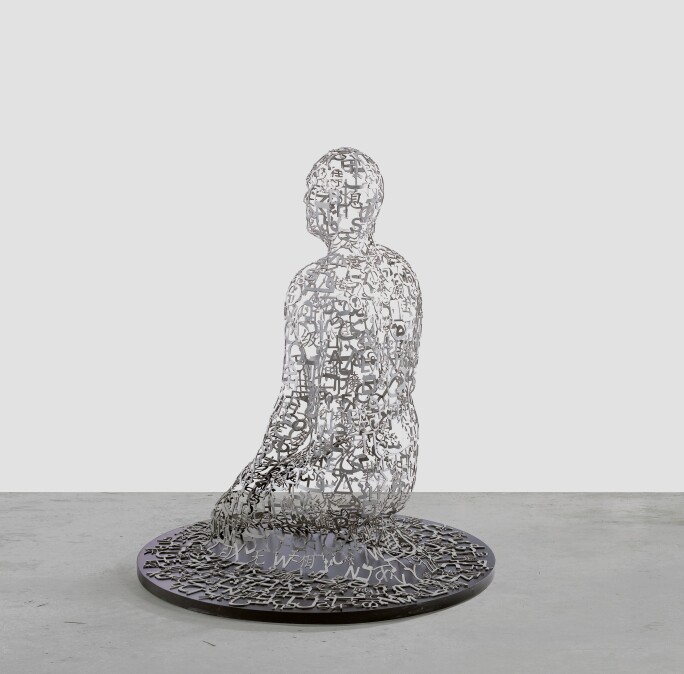A head of December’s Contemporary Art Evening Auction, we take a look at three of its highlights, executed by three very different artists working in the 20th Century.
1. Germaine Richier, Sauterelle, 1945. Estimate €80,000-120,000.
A guardian figure of modern art history, Germaine Richier remains unclassifiable. Trained in sculpture after live models by Bourdelle, her work took on an anthropomorphic turn after the war. Although the human body remained a central theme, it takes on a more fantastic dimension, as is visible in La Sauterelle, whose tormented aspect reveals a dramatic dimension of existentialist nature. Charged with a primitive force that, as worded by André Pieyre de Mandiargues, evokes a “rock or stump as well as a skinned figure”, La Sauterelle is undoubtedly one of the artist’s masterpieces that brought sculpture toward an unprecedented expressive and baroque naturalism.
2. César, La Vénus de Villetaneuse, conceived in 1962, executed on 1981. Estimate €80,000-120,000.
A pioneer of the Nouveau Réalisme movement, French sculptor César Baldaccini stunned his contemporaries with his large avant-garde works and use of seemingly inflexible artistic materials. Between 1954 and 1965, Cesar worked at les Ateliers de Villetaneuse where he discovered reclaimed metal and made it his material of choice. He assembled, casted, transformed, made and remade the material to create his art. While transforming the language and practice of sculpture, he returned constantly to the techniques he had discovered when penniless: welding scrap metal. Carried by the mythic narrative of their conception, La Vénus de Villetaneuse was one of the iconic representatives of that art, embodying the intimacy of the creative act and a practice that depends on the artist’s hands alone.
3. Jaume Plensa, To Allen Ginsberg (Variant IV) , 2006. Estimate €100,000-150,000.
Jaume Plensa is one of the most important Catalan contemporary artists of time, known mainly for his large-scale ethereal sculptures. As an avid reader, Plensa has always been very inspired by literature and poetry. He pays tribute to his love of literature by introducing language and words into his work. By combining different letters from a diversity of alphabets, Plensa demonstrates the conventional nature of language and its true essence. As in all of Plensa’s work, there are no negative assertions, but rather a message of hope, beauty and unity — the feeling of oneness despite the conventional barriers that separate humankind.





